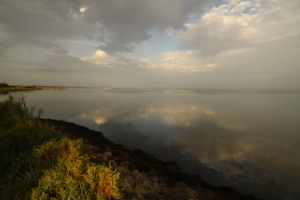
This article was published in the Estuarine, Coastal and Shelf Science journal in May 219, and is the result of a collaboration between the Tour du Valat, the University of Toulouse and the National Natural Reserve of Camargue.
Seagrass decline due to a variety of stressors has been observed worldwide. In the shallow Vaccarès lagoon, Camargue, France, the dominant macrophyte species, Zostera noltei, has suffered two major declines since 1996.
The first decline was well explained by salinity and turbidity variations, while the second one could not beexplained by these parameters. Other stressors such as chemical contamination, eutrophication or temperature increase could be explanatory variables for this most recent decline.
The aim of our study was to understand, via scientific monitoring from 2011 to 2015, the influence of chemical contamination and its possible interactions with other biological and environmental pressures, on seagrass physiology and population dynamics in the Vaccarès lagoon.
Multi-contamination by organic contaminants and trace metals was detected in the water and sediments, and their concentrations often exceeded environmental standards, particularly where seagrass regression was observed. Spatial variations in biological, environmental and chemical parameters in the lagoon were investigated by co-inertia analysis, which revealed significant relationships between environmental data, more particularly between contaminants, seagrass dynamics indices and biomarkers. Seagrass dynamics indices were negatively correlated with the concentrations of some herbicides in water (2,4-MCPA and bentazon) and with trace metals in sediments (arsenic). Rhizome starch contents in winter were negatively correlated with those herbicides and with several metals (arsenic, zinc, copper) in water and/or sediments. These results suggest that environmental contamination may play a role in seagrass decline.
However, complementary investigations, such as monitoring over longer periods and additional toxicity tests, are required to address the causal link between contamination and seagrass decline.
You can access it on the Tour du Valat web documentary portal (click here [1]).
Bibliographical reference: Espel D., Diepens N.J., Boutron O., Buffan-Dubau E., Chérain Y., Coulet E., Grillas P., Probst A., Silvestre J., Elger A. 2019. Dynamics of the seagrass Zostera noltei in a shallow Mediterranean lagoon exposed to chemical contamination and other stressors. Estuarine, Coastal and Shelf Science 222:1–12. doi: 10.1016/j.ecss.2019.03.019 [2]